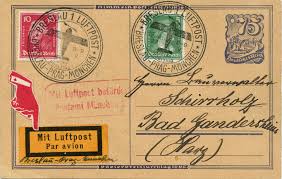Souvenir Sheet: U.P.U. (Universal Postal Union), Centenary (Cambodia 1975)
U.P.U. (Universal Postal Union), Centenary (Cambodia 1975)
12 April (Cambodia ) within release U.P.U. (Universal Postal Union), Centenary goes into circulation Souvenir Sheet U.P.U. (Universal Postal Union), Centenary face value 1,000 Cambodian riel
| Souvenir Sheet U.P.U. (Universal Postal Union), Centenary in catalogues | |
|---|---|
| Michel: | Mi: KH BL105A |
| Yvert et Tellier: | Yt: KH BS.PA31AA |
Souvenir Sheet is vertical format.
Also in the issue U.P.U. (Universal Postal Union), Centenary:
- Souvenir Sheet - Biplane and Concorde face value 160;
- Souvenir Sheet - UPU emblem face value 2,000;
- Stamp - Railway mail, wagon face value 500;
- Souvenir Sheet - UPU emblem face value 2,000;
- Souvenir Sheet - Postman and tail of the plane face value 235;
- Souvenir Sheet - Postman and tail of the plane face value 235;
- Souvenir Sheet - Caravel face value 2,000;
- Souvenir Sheet - U.P.U. (Universal Postal Union), Centenary face value 2,000;
- Souvenir Sheet - Diligence face value 70;
- Souvenir Sheet - Airship face value 1,000;
- Stamp - Caravel face value 2,000;
- Souvenir Sheet - Railway mail, wagon face value 500;
- Souvenir Sheet - Airship face value 1,000;
- Souvenir Sheet - Biplane face value 20;
- Souvenir Sheet - U.P.U. (Universal Postal Union), Centenary face value 2,000;
- Souvenir Sheet - UPU emblem face value 2,000;
- Souvenir Sheet - Biplane and Concorde face value 160;
- Souvenir Sheet - Postman and pack mule face value 15;
- Souvenir Sheet - Steam-powered wagon face value 180;
- Souvenir Sheet - Diligence face value 70;
- Souvenir Sheet - Caravel face value 2,000;
- Souvenir Sheet - U.P.U. (Universal Postal Union), Centenary face value 1,000;
- Stamp - Airship face value 1,000;
- Souvenir Sheet - Biplane face value 20;
- Souvenir Sheet - Postman and pack mule face value 15;
- Souvenir Sheet - U.P.U. (Universal Postal Union), Centenary face value 1,000;
- Souvenir Sheet - Steam-powered wagon face value 180;
- Souvenir Sheet - Railway mail, wagon face value 500;
- Souvenir Sheet - UPU emblem face value 2,000;
Souvenir Sheet U.P.U. (Universal Postal Union), Centenary it reflects the thematic directions:
A hot air balloon is a lighter-than-air aircraft consisting of a bag, called an envelope, which contains heated air. Suspended beneath is a gondola or wicker basket (in some long-distance or high-altitude balloons, a capsule), which carries passengers and a source of heat, in most cases an open flame caused by burning liquid propane. The heated air inside the envelope makes it buoyant, since it has a lower density than the colder air outside the envelope. As with all aircraft, hot air balloons cannot fly beyond the atmosphere. The envelope does not have to be sealed at the bottom, since the air inside the envelope is at about the same pressure as the surrounding air. In modern sport balloons the envelope is generally made from nylon fabric, and the inlet of the balloon (closest to the burner flame) is made from a fire-resistant material such as Nomex. Modern balloons have been made in many shapes, such as rocket ships and the shapes of various commercial products, though the traditional shape is used for most non-commercial and many commercial applications.
The hot air balloon is the first successful human-carrying flight technology. The first untethered manned hot air balloon flight in the world was performed in Paris, France, by Jean-François Pilâtre de Rozier and François Laurent d'Arlandes on November 21, 1783, in a balloon created by the Montgolfier brothers. The first hot air balloon flown in the Americas was launched from the Walnut Street Jail in Philadelphia on January 9, 1793, by the French aeronaut Jean Pierre Blanchard. Hot air balloons that can be propelled through the air rather than simply drifting with the wind are known as thermal airships.
An anniversary is the date on which an event took place or an institution was founded in a previous year, and may also refer to the commemoration or celebration of that event. For example, the first event is the initial occurrence or, if planned, the inaugural of the event. One year later would be the first anniversary of that event. The word was first used for Catholic feasts to commemorate saints. Most countries celebrate national anniversaries, typically called national days. These could be the date of independence of the nation or the adoption of a new constitution or form of government. The important dates in a sitting monarch's reign may also be commemorated, an event often referred to as a "Jubilee".
Aviation is the practical aspect or art of aeronautics, being the design, development, production, operation and use of aircraft, especially heavier than air aircraft. The word aviation was coined by French writer and former naval officer Gabriel La Landelle in 1863, from the verb avier (synonymous flying), itself derived from the Latin word avis ("bird") and the suffix -ation.
Postal history is the study of postal systems and how they operate and, or, the study of the use of postage stamps and covers and associated postal artifacts illustrating historical episodes in the development of postal systems. The term is attributed to Robson Lowe, a professional philatelist, stamp dealer and stamp auctioneer, who made the first organised study of the subject in the 1930s and described philatelists as "students of science", but postal historians as "students of humanity". More precisely, philatelists describe postal history as the study of rates, routes, markings, and means (of transport).
The mail or post is a system for physically transporting documents and other small packages; or, the postcards, letters, and parcels themselves. A postal service can be private or public, though many governments place restrictions on private systems. Since the mid-19th century national postal systems have generally been established as government monopolies with a fee on the article prepaid. Proof of payment is often in the form of adhesive postage stamps, but postage meters are also used for bulk mailing. Modern private postal systems are typically distinguished from national postal agencies by the names "courier" or "delivery service". Postal authorities often have functions other than transporting letters. In some countries, a postal, telegraph and telephone (PTT) service oversees the postal system, in addition to telephone and telegraph systems. Some countries' postal systems allow for savings accounts and handle applications for passports.





